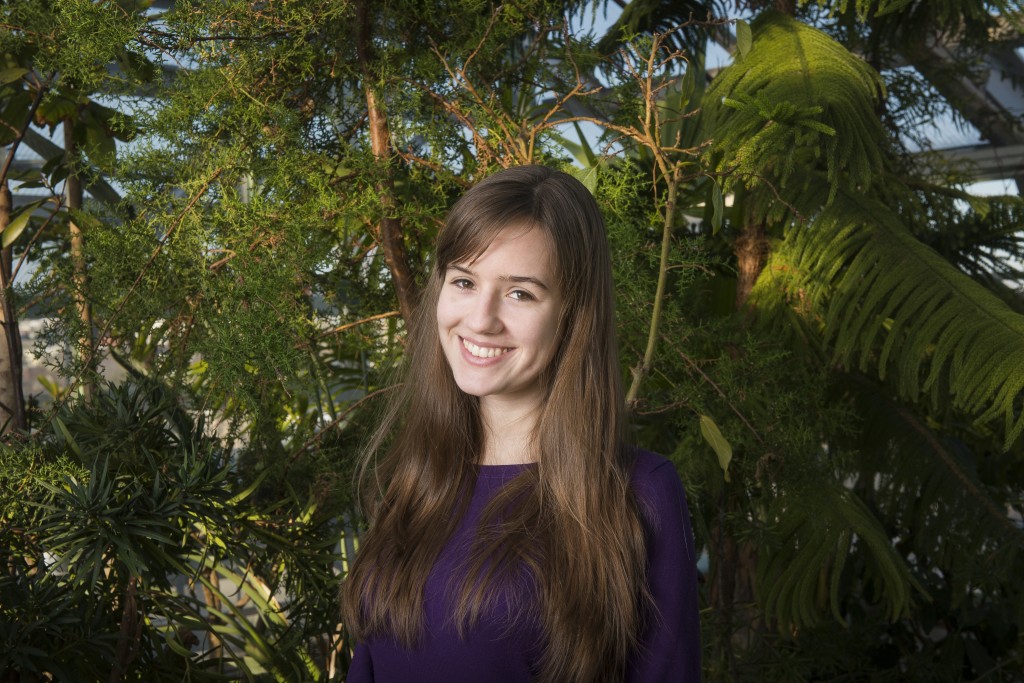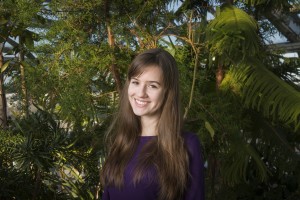Publishing research in one of the GSA Journals as an undergraduate is a significant and valuable authorship experience and we want to hear your story (even if it was published years ago!). GSA’s Spotlight on Undergraduate Research showcases GENETICS and G3: Genes|Genomes|Genetics authors who were undergraduates when contributing to their paper.
Holly (Martha) Elmore
PhD Candidate, Harvard University
Undergraduate Institution: Vanderbilt University
Research Advisor: Dr. Antonis Rokas
How did you become involved in research?
By the time I began my sophomore year of college, I knew I wanted to work on genomes and evolution. Dr. Rokas was my Evolution professor that year, and when he mentioned he worked on fungal genomes, I set my sights on working in his lab. I have always been fond of fungi, and turns out their genomes are fascinating! I started working as an undergraduate researcher in the Rokas lab the next semester. I was paired with a graduate student, John Gibbons (now faculty at Clark University), who was studying repetitive regions of the genome, because I shared his fascination with non-coding DNA.
What was it like authoring and contributing to this paper?
Even though I was mostly doing grunt work at first– running six plates of PCR in the morning and running it all out on a gel in the evening– it was already the most exciting project I had ever worked on. At that stage of my career, all the techniques were new and awe-inspiring to me. *I* could copy DNA, literally see it on a gel, and then sequence it. It felt like such a privilege to take part in the research process. When the time finally came for analysis and writing, and I had read so much and I knew the data so closely that I was just bursting with ideas. It was amazing to do such creative work, all the while knowing that, if I did it right, I would find out something real about the hidden world of the genome.
What was the most interesting (or fun!) aspect of your time working on this project?
It was such an incredible feeling when the sequencing data came back. When you’re working with small amount of invisible liquid all day, it can be hard to grasp that there is really something in there. Seeing the sequences (well, to be strictly accurate, fluorescent genotyping) made it all so real. There were plenty of interesting and fun moments, but this one stands out as the most immediate gratification.
How did working on this project influence what you’re doing now (if at all)?
I learned so many specific skills from this project that I have used ever since– PCR, electrophoresis, UNIX command line, etc.– but, most importantly, this project taught me how to do research. How to do research is a skill I will be refining for the rest of my life, but this project gave me a great head start with identifying tractable and interesting questions, planning a project, collaborating with others, managing my expectations, and disseminating my findings. Working in the Rokas Lab cemented my love of fungi and genomics, which I plan to continue studying.
CITATION
Elmore MH, Gibbons JG, Rokas AR. (2012) Assessing the Genome-Wide Effect of Promoter Region Tandem Repeat Natural Variation on Gene Expression. G3: Genes|Genomes|Genomics 2(12): 1643-1649

































